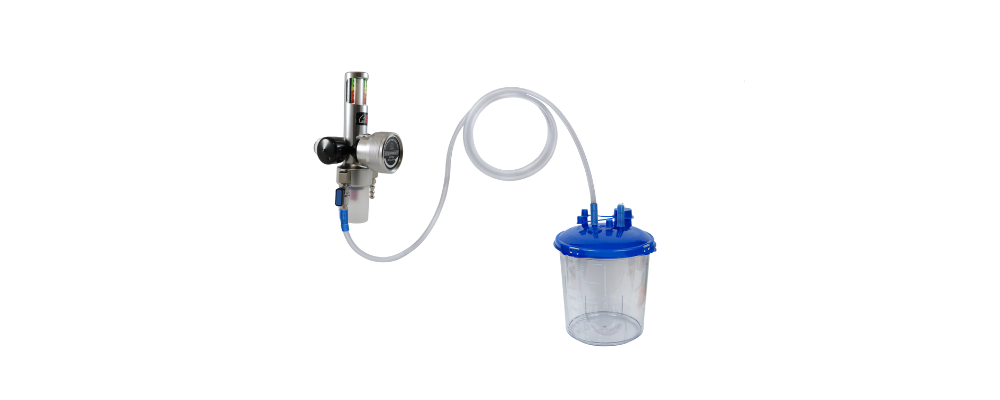Suction v.s. Flow in the Medical Industry
February 8, 2021

In healthcare settings, “suction” and “flow” are often used interchangeably.
But these two concepts describe very different things. Understanding the difference is essential for safe and effective patient care, especially when using medical suction systems in critical care, the OR, or procedural environments.
What Is Suction?
Suction is not the same as flow. Suction refers to the negative pressure applied to remove fluids, mucus, or air from a patient’s body. This vacuum is created by a wall suction source and regulated through a suction regulator.
Key facts about suction:
- It is measured in mmHg or cm H₂O.
- It controls how forcefully fluids are pulled.
- It does not guarantee that fluid will move. It simply creates the condition where flow becomes possible.
Suction regulators are the devices that set the vacuum level for a given task, like clearing a surgical field or maintaining a patient’s airway.
What Is Flow?
Flow refers to the actual movement of air or fluid through tubing. Think of flow as what happens when suction meets an open path.
Factors that influence flow:
- Tubing diameter
- Length of the tubing run
- Height of the collection canister
- Presence of kinks, clamps, or blockages
If you hear suction noise but fluid is not moving, you likely have suction without flow. This mismatch can lead to dangerous delays in emergency or surgical care.
How Do Suction and Flow Work Together?
A suction regulator may be set correctly, but if tubing is too narrow or if the collection path is obstructed, flow will be limited. On the other hand, you may achieve high flow in low-pressure applications if the system is well designed.
In high-stakes settings like:
- Operating rooms
- Intensive care units
- Emergency departments
it is important to routinely check both the suction regulator setting and the actual flow capacity of the system in use.
A properly configured system balances vacuum strength with the ability to move fluids smoothly and continuously.
Best Practices for Clinicians
- Check suction regulator function and accuracy before every use.
- Inspect tubing for blockages, sharp bends, or connection issues.
- Use wide bore tubing where rapid evacuation is needed.
- Match the regulator setting to the clinical situation.
- Do not assume sound equals function. Always confirm visual flow.
The Boehringer Suction Regulator Advantage
Boehringer Suction Regulators are built to deliver precise pressure control and dependable performance in every department. When paired with correctly selected tubing and collection accessories, they help ensure that both suction and flow are optimized.
Boehringer suction regulators are designed to work the way clinicians do: simply, safely, and without second-guessing.
Need Help Improving Your Suction Setup?